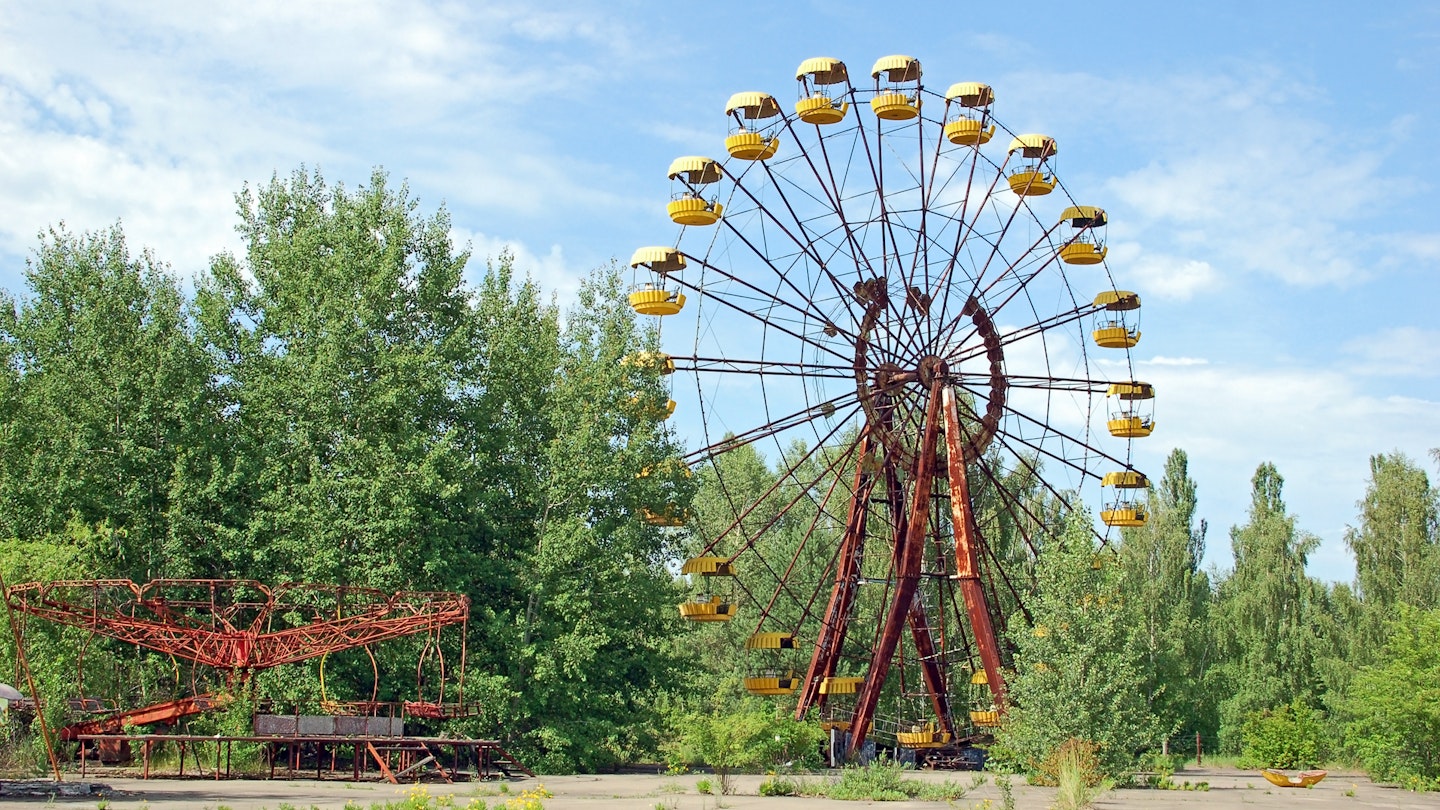Even if you don’t consider yourself a dark tourist, it’s natural to be intrigued by sites associated with death and tragedy. Concentration camps, disaster memorials, and other dark tourism sites preserve the evidence of humankind’s worst cruelty. They also offer stories of hope and solidarity from the bleakest chapters of world history.
Auschwitz-Birkenau Memorial & Museum, Poland

During WWII, more than 1.1 million people were murdered by the Nazis at Auschwitz-Birkenau. Now preserved as a memorial, these notorious concentration camps bring in enormous numbers of tourists (more than 2.32 million people in 2019).
Many visitors arrive at Auschwitz-Birkenau on day trips from charming Kraków, 65 km east. Similarly, former concentration camps like Terezín (north of Prague) and Dachau (outside Munich) attract day-trippers. The challenge lies in transitioning from holiday mode – selfie stick in hand, picnic prepared, and novelty T-shirt donned – to a mindset befitting the place where Jewish and Roma people, as well as prisoners of war and LGBTIQ+ individuals, faced unimaginable suffering.
Respectful photography seems self-evident, yet site officials often have to remind visitors. It is inappropriate to strike a pose on the railway lines that led countless individuals to their demise. Rethink the necessity of selfies; they often focus on oneself, not on the memorialized victims.
Killing Fields and S-21, Cambodia

More than 1.7 million people were killed during the Cambodian genocide of 1975–79. The S-21 prison and interrogation cells in Phnom Penh were sites where the Khmer Rouge tortured thousands. If victims weren’t murdered on-site, they were transported to Choeung Ek’s Killing Fields, located 15 km south. The Killing Fields now serve as a memorial, while S-21 is preserved as the Tuol Sleng Genocide Museum.
Approximately 800 visitors frequent the Killing Fields daily, with many also touring S-21, guided by some survivors of the genocide. Although there are concerns over site capacity to handle the growing volume of tourists, locals largely welcome visitors. Tourism accounts for over 15% of Cambodia’s GDP. Beyond economic benefits, visiting sites of the Khmer Rouge era ensures their preservation and fosters a confrontation with the country’s history.
While the majority of visitors are respectful, some tourists disregard signs against photography or walk across mass graves. Instances of theft of bone fragments and graffiti at Tuol Sleng have been reported. Approach such visits with environmental and emotional sensitivity: observe rules, be mindful of where you walk, avoid photography in sensitive areas, and consider hiring a local guide to ensure support for the Cambodian economy.
A-Bomb Dome and Peace Memorial Museum, Hiroshima, Japan

After the US Army Air Forces bombed Hiroshima on 6 August 1945, the city became a symbol of death on an unprecedented scale. Hiroshima was devastated by the atomic blast, killing over 70,000 people instantly, with a similar number succumbing later due to severe burns and radiation illnesses.
The A-bomb Dome, the lone major structure to survive, stands as a testament to that day. Nearby, the Hiroshima Peace Memorial Museum presents harrowing reconstructions of victim experiences and thoughtful messages advocating for world peace.
This chilling history is a heavy burden for Hiroshima. While it’s essential to dedicate time to the city’s dark tourism sites, it’s equally valuable to discover Hiroshima’s broader historical context. Explore the rich history of Hiroshima-jō, a faithful reconstruction of a 16th-century castle, or take a ferry to Miyajima Island to admire beautiful temples and interact with friendly deer. Engaging with local residents about their beloved town, if possible, can enrich your experience. Ultimately, leave with a sense of Hiroshima as a vibrant city, rather than solely a symbol of wartime horror.
Kigali Genocide Memorial, Rwanda

Visitors must exercise caution when visiting locations tied to recent tragedies. The Kigali Genocide Memorial honors the victims of the 1994 genocide of the Tutsi people. Approximately one-quarter of a million individuals are interred in mass graves, having been killed by Hutu extremists and their allies. Video testimonials from genocide survivors, alongside heartbreaking narratives of children who perished, make this a profound location to visit.
Thoughtful behavior is paramount, particularly in giving full attention to the displays. Ideally, prior research will enhance understanding once you arrive. Family members who lost loved ones in the genocide visit the memorial to honor those who were murdered. It is crucial for attendees to show reverence by being fully engaged with the memorial.
Chernobyl, Ukraine

The 1986 explosion at Chernobyl’s nuclear power plant is infamous. The disaster resulted in numerous deaths, countless radiation-related illnesses, mass evacuations, and ecological damage that continues to be evaluated today.
The HBO miniseries Chernobyl heightened global awareness of the tragedy, leading to increased interest in tours around the “exclusion zone,” the heavily contaminated area evacuated post-disaster.
While a TV series can create a distance from reality, the exclusion zone is no film set. Tour guides frequently advise visitors to don protective clothing and avoid contact with the environment. Careful oversight of the area ensures visitors leave without radioactive dust on their attire.
The haunting aspect of a poisoned landscape is compounded by the prospect of a morbid curiosity that engulfs the globe. However, be prepared to confront preconceived notions about Soviet-era tragedies and desolate landscapes. Some 200 residents still inhabit the exclusion area, despite the risks. Eager young Ukrainians aim to transform Chernobyl’s grim legacy through educational tours and even special events, making it essential for anyone visiting to approach the site with an ethical mindset.





